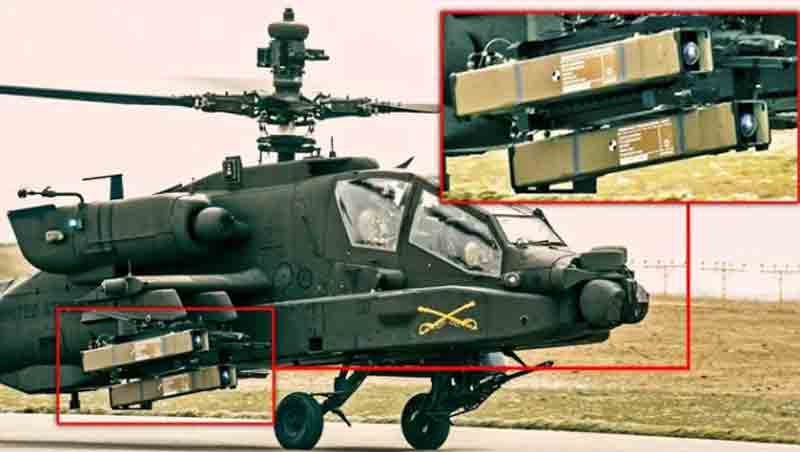In a pivotal development for aerial combat, the United States has introduced AH-64 Apache attack helicopters equipped with Israeli-manufactured Spike NLOS (Non-Line of Sight) missiles in Iraq, marking the first operational deployment of this sophisticated missile system in an active conflict environment.
An AH-64 Apache from the U.S. Army was observed outfitted with Spike NLOS missiles at Erbil Air Base in Iraq, a key location that functions as an essential operational center for American military efforts throughout Iraq and the surrounding region.
The U.S. Army has a presence at Erbil Air Base, also referred to as Harir Air Base, situated in the Kurdistan Region of Iraq. This base plays a crucial role in supporting U.S. and coalition military operations against ISIS, as well as broader strategic initiatives in the Middle East.
It accommodates personnel from the U.S. Army, Air Force, and coalition allies who are engaged in training, advising, and assisting Iraqi and Kurdish security forces. The introduction of AH-64 Apaches armed with Spike NLOS missiles signifies a significant enhancement in the U.S. Army’s aerial combat capabilities, highlighting the rapidly changing landscape of air operations in this strategically vital area.
The incorporation of these precision-guided missiles greatly extends the operational range and improves the accuracy of strikes by U.S. forces.
In contrast to the conventional AGM-114 Hellfire and AGM-179 Joint Air-to-Ground Missiles (JAGM) typically utilized by Apache helicopters, the Spike NLOS missile features an exceptional operational range of up to 32 kilometers (20 miles). It is outfitted with an advanced multi-mode guidance system that allows for both autonomous targeting and direct operator control, offering remarkable tactical versatility.
The Spike NLOS (Non-Line of Sight) missile system, created by Rafael Advanced Defense Systems, generally operates within a range of 25 to 32 kilometers (around 20 miles), with enhanced variants capable of extending this range to 50 kilometers. It is recognized for its precision targeting capabilities through real-time guidance utilizing electro-optical seekers, facilitating effective strikes beyond visual range. In comparison, the AGM-114 Hellfire and AGM-179 JAGM missiles have operational ranges limited to 7 to 11 kilometers (4 to 7 miles) and 8 to 16 kilometers (5 to 10 miles), respectively.
This recent deployment comes after comprehensive operational testing and thorough training exercises carried out by the U.S. Army’s esteemed 101st Combat Aviation Brigade (101st CAB). Earlier this month, the brigade marked a significant achievement by successfully operating an AH-64 Apache helicopter equipped with training variants of the Spike NLOS missile, showcasing substantial advancements in the integration of this cutting-edge weapon system with the Apache’s onboard combat capabilities.
Colonel Tyler Partridge, the commander of the 101st Combat Aviation Brigade, highlighted the importance of this advancement in a statement from the Defense Visual Information Distribution Service (DVIDS): “The operational testing of Spike NLOS munitions integrated with the AH-64E V6 systems significantly boosts our readiness for real-world missions, enhancing the combat power and capabilities of our ground forces.”
The integration of this sophisticated missile system is expected to greatly enhance the effectiveness of U.S. military operations by facilitating accurate strikes against enemy targets from safer distances, thereby minimizing exposure to hostile air-defense systems.
Developed by the Israeli defense firm Rafael and tailored to meet U.S. military specifications by Lockheed Martin, the Spike NLOS missile has been in service with the Israeli Defense Forces (IDF) since the 1980s. Over the years, the missile system has seen considerable upgrades aimed at improving accuracy, operational range, and tactical flexibility.
In contrast to the laser-guided Hellfire missile, the Spike NLOS features a “man-in-the-loop” (MITL) targeting system, which allows real-time operator control through an onboard infrared camera. This cutting-edge capability enables operators to modify targeting during flight, accurately engage moving targets, and quickly adapt to changing battlefield conditions.
Discover more from Defence Talks | Defense News Hub, Military Updates, Security Insights
Subscribe to get the latest posts sent to your email.





